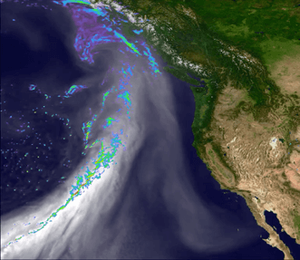"The Challenge of Predicting the Climate, Earth System Models and High-Performance Computing" by Aaron Donahue

Join the Department of Civil and Environmental Engineering and Earth Sciences for a seminar featuring Aaron Donahue (Ph.D. ‘16), Staff Scientist at Lawrence Livermore National Laboratory (LLNL). A chance to meet the speaker and enjoy light refreshments will begin at 5:00 p.m. in 156 Fitzpatrick Hall.
Abstract
Climate change is one of the biggest challenges facing humanity. The year 2022 exposed the world to the risks that climate change poses. Droughts and fire in the Western U.S., heat waves in Europe and massive flooding in Pakistan are a few of the examples of the significant financial and human cost associated with a changing climate. In this presentation, the science that supports the understanding of climate change in the context of Earth’s geologic history will be discussed. An emphasis of this talk will be on the contribution of Earth System models to predicting the future trajectory of the Earth’s climate and in identifying key areas where uncertainty remains. This presentation will highlight the state-of-the-science cloud resolving Energy Exascale Earth System (E3SM) model, which has been developed to run at incredibly high resolution on the world’s fastest computers. Donahue will also discuss the future of climate modeling, including how artificial intelligence is being used to improve model speed and accuracy.
This photo is from work performed under the auspices of the U.S. Department of Energy by Lawrence Livermore National Laboratory under Contract DE-AC52-07NA27344. IM Release number LLNL ABS- 843481.
Biography
Aaron S. Donahue graduated from the University of Notre Dame in 2016 with a Ph.D. in Civil Engineering. His thesis work focused on the development of computational models to study the impact of ocean waves on coastal communities during extreme events such as hurricanes. After graduating from the University of Notre Dame, Dr. Donahue extended his research focus to climate modeling, accepting a post-doctoral position in the Lawrence Livermore National Laboratory (LLNL) Climate Program. Aaron has remained at LLNL as a staff scientist where his research focuses on the development of the Simple Cloud Resolving E3SM Atmosphere Model (SCREAM), the U.S. Department of Energy’s state-of-the-science high resolution climate model.
Questions?
Please contact Diane E. Westerink, Department of Civil and Environmental Engineering and Earth Sciences, at 574-631-4005 or westerink.5@nd.edu.
Sponsored by Challenges and Innovation Seminar Series in Civil and Environmental Engineering and Earth Sciences